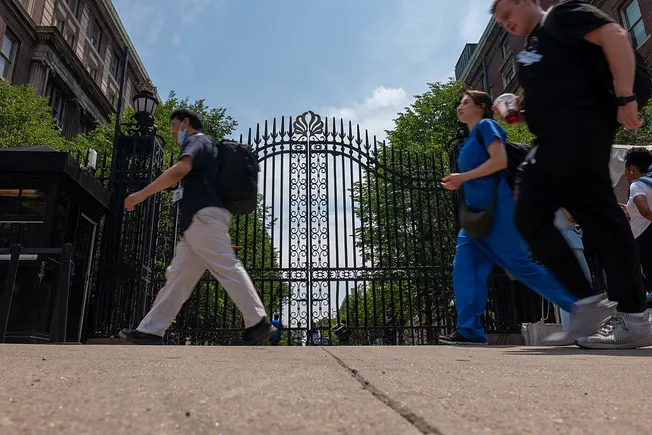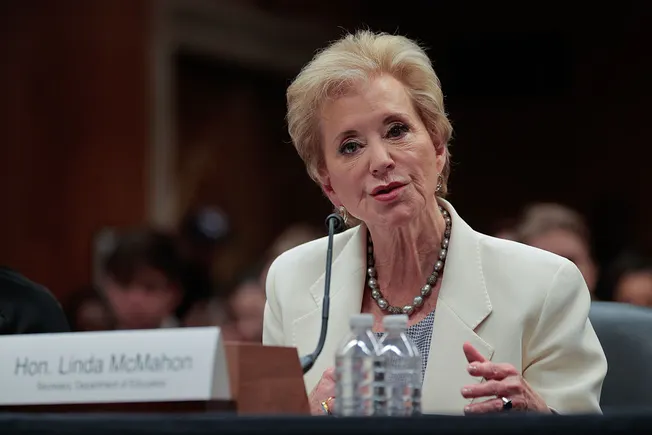Listen to the article
Dive Brief:
Columbia University’s operating surplus fell by just over 63% year over year to $112.6 million in fiscal 2025, according to financial statements released Thursday.
Operating revenues increased 2.1% while expenses rose 5.3%, Anne Sullivan, the Ivy League university’s executive vice president for finance, noted in a public message. In a tumultuous political year, federal grant revenue remained essentially flat at $1.3 billion, she said.
Sullivan described the Trump administration’s termination of hundreds of grants to Columbia this year as “destabilizing” and said the university’s financial report “does not adequately capture the level of strain experienced by the research enterprise in the third and fourth quarters.”
Dive Insight:
Columbia’s head-on encounter with the Trump administration left a mark on its finances, even if — as Sullivan pointed out — the damage wasn’t fully captured in the institution’s fiscal year, which ended June 30.
In March, the administration terminated $400 million of Columbia’s federal grants and contracts. The cuts came just days after the government announced a probe over allegations that the university hadn’t done enough to protect Jewish students from antisemitism.
Amid the turmoil, Columbia laid off nearly 180 employees tied to federally funded projects. The university also dipped into its endowment’s unrestricted funds to help preserve some of the research projects, creating what the institution called its Research Stabilization Fund.
Sullivan on Thursday said the fund issued some 500 internal grants to Columbia researchers in June and September. She didn’t specify the total amount spent but described the scale as “modest.”
Soon after terminating Columbia’s funding in March, the Trump administration offered the university an ultimatum. Columbia agreed to a host of unprecedented conditions in return for the government reinstating most of the canceled research grants.
Columbia signed a formal agreement with the Trump administration in July that included a $200 million payment to the government, to be paid over three years, in addition to a $21 million sum for a claims fund under an agreement with the U.S. Equal Employment Opportunity Commission. Although signed just after the close of fiscal 2025, the settlement is accounted for in Columbia’s financial statements.
But the heaviest impact on the university’s income statement came from rising operating costs, which jumped 5.3% to $6.6 billion. Expenses rose across the board — from salaries for instructors and administrators to research costs to maintenance.
Meanwhile, revenues grew more slowly. Sullivan described Columbia’s 4.1% increase in net tuition and fee revenue, which totaled $1.6 billion, as “modest.” Tempering that gain was a 4.6% rise in institutional financial aid to $622.6 million for the fiscal year. Columbia is among the most expensive colleges in the country to attend, though it offers free tuition to students from families that make under $150,000 a year.
With expenses rising at more than double operating revenue, Columbia saw its operating income shredded by nearly two-thirds, which Sullivan characterized as “modest” and “lower than our historical average.”
Still, Sullivan described its operating surplus as critical to helping fund capital projects, including maintenance and renovation of its facilities.
“The University’s ongoing cost containment efforts remain important to preserve financial flexibility and ensure that resources are allocated in a manner consistent with our priorities for excellence in teaching, research, and patient care,” she added.
To be sure, Columbia is still among the wealthiest universities in the U.S. Its net assets grew 3.7% year over year to $20.5 billion.
Gifts to the university’s endowment fell by about a quarter, to $177.9 million. Even so, the value of the endowment’s donor-restricted funds still rose 8.7%, to $10.9 billion.
In terms of operating income, Columbia’s Ivy League peer Harvard University fared worse. Its recently issued fiscal 2025 financials showed a $112.6 million operating loss, Harvard’s biggest loss in nearly a decade and a half.
Like Columbia, Harvard has come under financial attack by the Trump administration, which has sought to damage the institution on multiple fronts and is using several government agencies in its withering campaign of attacks.
“Even by the standards of our centuries-long history, fiscal year 2025 was extraordinarily challenging,” Harvard President Alan Garber said in a message accompanying the financial statements.”
























